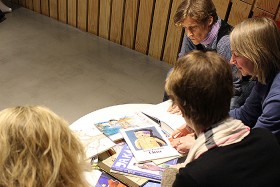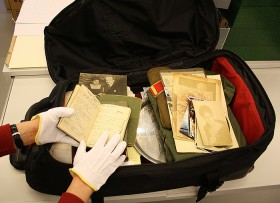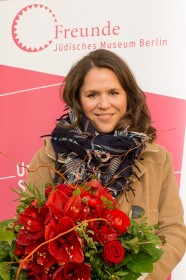An Interview with Barbara Rösch about “Recommended Reading on National Socialism and the Holocaust”

Members of the reading circle © Jewish Museum Berlin, photo: Christine Marth
A German-language brochure listing “Recommended Reading on National Socialism and the Holocaust” was recently made available for download from our website as a PDF. Over the last few years several museum employees read widely on the topic, shared their opinions and then made this selection. Dr. Barbara Rösch of our Education Department talked to me about what was involved. She is a member of the reading circle and also worked for a time at the Universities of Potsdam and Leipzig as an elementary school teacher trainer. In addition to her work at the Jewish Museum Berlin she is currently writing a book about everyday racism in elementary schools.
Dear Barbara, countless books about National Socialism and the Holocaust are available for children and young people. How did you go about making a selection?
Our work is oriented primarily to the needs of teachers, who regularly ask us to make recommendations and indeed seem almost to think that we must. We therefore bear in mind the so-called “classics” that are read in German classrooms as well as new publications, books written from a non-German perspective, and books that touch upon hitherto neglected themes, such as the hakhshara movement. → continue reading
The Last Signs of a Life in Germany Sold at Auction 75 Years Ago

Franziska Bogdanov, unpacking the suitcase from Arno Roland’s bequest
Jewish Museum Berlin CC-BY Katharina Erbe
The items in our archives have arrived here through the most various means: we have donations from German-Jewish emigrants from all over the world as well as gifts from their estates, donated to the museum after they have died by their children. We also receive some gifts from Germany, occasionally from people who aren’t themselves Jewish and yet some memorabilia from a Jewish friend or acquaintance was passed down through the generations in their family.
At the end of this last year we received a donation from the estate of a one-time Berliner who recently died in New Jersey (USA). It consisted of a large suitcase filled to the brim with documents, letters, photographs, and other objects. → continue reading
On Identifying Museum Visitors and What Moves Them

The ten-millionth visitor Paula Konga in November 2015 © Jewish Museum Berlin, photo: Svea Pietschmann
Gleeful excitement in the museum lobby, for we are greeting our ten-millionth visitor since the opening in 2001, and we are all ears. “It’s my day off and I want to take the opportunity to revisit the permanent exhibition,” the 33-year-old Berliner Paula Konga tells us. An architect by profession, she is particularly interested in Daniel Libeskind’s design of the museum. “The building is well worth visiting more than once, also for Berliners.” No sooner have we handed over a bouquet of flowers and a one-year-membership in the Friends of the Jewish Museum Berlin Association than our guest of honor vanishes into the ramified spaces of the Libeskind Building (further information about the Libeskind Building can be found on our website).
Next, a group of Italian schoolchildren pushes past me, another museum visitor asks me to switch his audio guide to French, and a group of British teenagers mills about in search of a young man in a red cap. The seething mass sets me thinking: What actually moves you here, in the Jewish Museum Berlin? → continue reading


